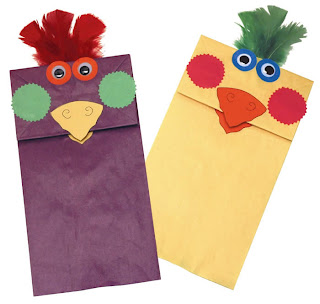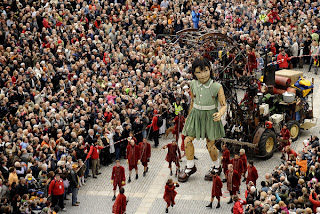Concept for a production of Ruined
The unifying vision for this production is to have as much realism as possible. The set and various parts of the audience area will be as realistic a representation of the African jungle as possible. The audience should get the feeling of actually being in the Democratic Republic of the Congo. The experiences of the characters of Ruined can only happen in a third world country. The audience needs to feel the experience for themselves, and understand the resiliency of spirit required of the characters in keeping their dignity throughout the atrocities they endure.
The theater chosen for this production is the Gillespie Theater at the News-Journal Center in Daytona Beach, Florida. There are several reasons for this choice. First, it is local and familiar. The size of this theater is very important. The stage is large enough for the set, but the audience seating area is small enough to promote intimacy between the audience and the action of the play. The people of Daytona Beach are the perfect audience for this play, because the purpose behind Ruined is to enlighten the privileged people of the United States about the horrible atrocities of this civil war. Most of the residents of Daytona Beach know nothing of this war.
 |
| Gillespie Theater Floorplan |
| Audience Seating |
| The Stage |
The scenic design would be done in such a way as to give the illusion that the audience is in the jungle and part of the scenery. The aisles of the seating area would have sheets or carpet painted to look like dirt road tacked to them leading all of the way to the stage. There would also be some jungle foliage along the walls. Center stage is a partially built hut similar to the picture below. Bamboo walls built to stand just enough off the stage floor to show that they are there, and a thatch roof hung from the theater ceiling. The upper portion of the walls is left open, so the audience can see the action taking place inside the bar. All of the furniture is made of bamboo.
 |
| The Bar/Brothel |
The characters costumes would be similar to the pictures below. Christian will also have a faded brown or blue suit jacket, until the end when he gets a new suit. Mama’s costumes will be royal colors like blue and purple, to show her place as the owner of the brothel and the person in charge. The other women’s costumes will be red, yellow, or white. The miner’s costumes will appear to be filthy. There will be enough differences between the rebel soldier’s uniforms and the government soldier’s uniforms for the audience to be able to tell them apart from each other.
 |
| Mama & Christian's costumes |
 |
| Mama's Girls Costumes |
 |
| Miner's Costumes |
 |
| Government Soldier's Costumes |
 |
| Rebewl Soldier's Costumes |
The lighting for this production will be somewhat different from a typical theatrical production. The audience seating area will be included. This area will be left dimly lit throughout the production, instead of being dark. This will promote the feeling for the audience of being part of the action taking place on the stage. The stage lighting will change depending on the scene. Daytime scenes will be lit with a yellowish hue to resemble sunlight. Scenes that take place in rainy weather will have a grayish hue to the lighting to resemble sunlight through cloud cover. Nighttime scenes will have a bluish hue to resemble moonlight and starlight. The thatch roof will have some sort of festive lights hung around it to show that this is a jovial place for relaxation. During the scene with the confrontation between the government soldiers and Mama there will be a smoky haze over the stage to show that the war has arrived on their doorstep.
The sound design for this production will also include the audience seating area. Throughout the production, there will be an ambient sound of jungle birds, monkeys and other jungle animals playing at low volume surrounding the entire audience. This will further enhance the audience’s feeling of being in the action of the production. The music for the bar will come from a radio prop in the set that is rigged to produce the sound of an old transistor radio. During the confrontation scene, there will be the sound of explosions and small arms fire surrounding the entire audience seating area. This will also enhance the audience’s feeling of being a participant in the action.
Adherence to all of the specific directions included in the script will also be paramount. This realistic presentation along with including the audience in the environment of the production should have a very great impact on the audience. A production of Ruined done in this way should have a deeply emotional and long lasting impact on the audience that attends this production. This was the purpose the author of this play had in mind when she wrote it.
Daytona State College. News-Journal Center at Daytona State College. Daytona State College. November 10, 2008. Web. May 11, 2011. http://www.daytonastate.edu/venues/njc.html
Kershner, Geoffrey. Theater Arts at Daytona State College, Rehearsals Begin. Blogspot. September 9, 2009. Web. May 11, 2011. http://daytonastatetheater.blogspot.com/2009_09_01_archive.html
Kershner, Geoffrey. Theater Arts at Daytona State College, Rehearsals Continue. Blogspot. September 14, 2009. Web. May 11, 2011. http://daytonastatetheater.blogspot.com/2009_09_01_archive.html
Anonymous. 9Q0HQ/6 Democratic Republic of Congo. AT International. January, 2011. Web. May 11, 2011. http://dxing.at-communication.com/en/9q0hq-6_democratic-republic-of-congo/
Parry, Tom. Developing World Stories, Rankin Congo exhibition. Mirror Blogs UK. February 12, 2010. Web. May 11, 2011. http://blogs.mirror.co.uk/developing-world-stories/congo/
Parry, Tom. Developing World Stories, Global Witness names British firms dealing with Congo rebels. Mirror Blogs UK. July 21, 2009. Web. May 11, 2011. http://blogs.mirror.co.uk/developing-world-stories/congo/
Parry, Tom. Developing World Stories, CAFOD from Congo gold mine. Mirror Blogs UK. May 17, 2009. Web. May 11, 2011. http://blogs.mirror.co.uk/developing-world-stories/congo/
Parry, Tom. Developing World Stories, a new front on the battlefields of eastern Congo. Mirror Blogs UK. January 22, 2009. Web. May 11, 2011. http://blogs.mirror.co.uk/developing-world-stories/congo/





